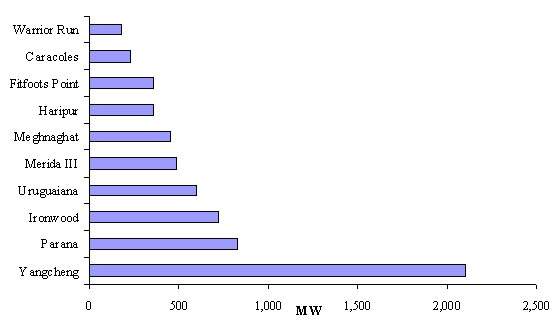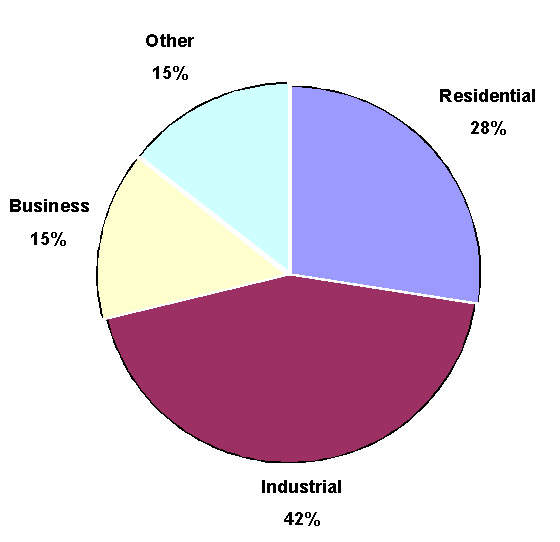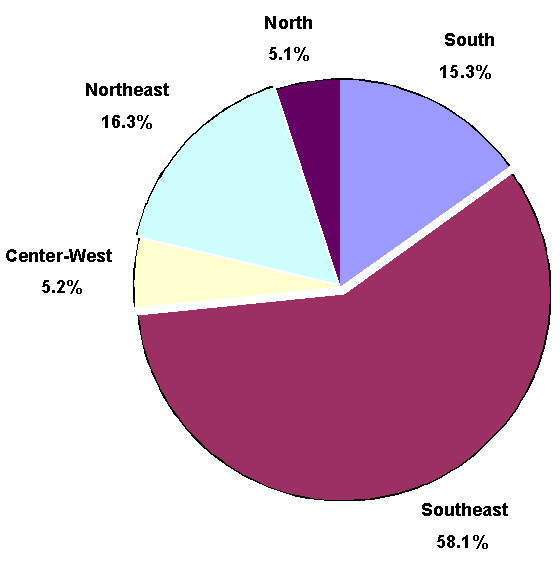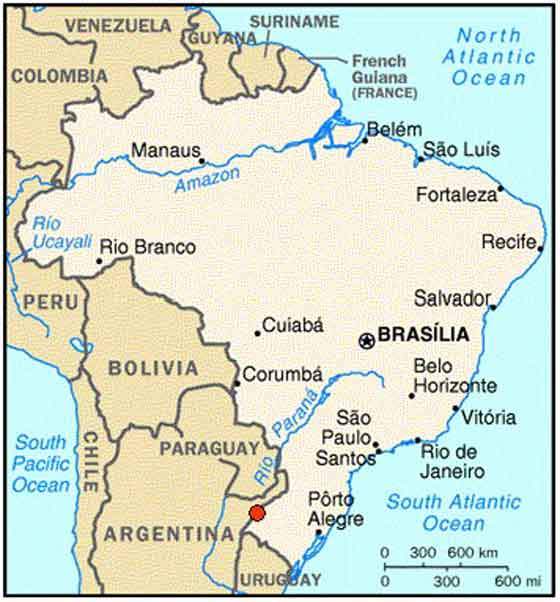The 600MW Uruguaiana combined-cycle thermal power plant has been constructed by AES America at a cost of $350 million. Located in Uruguaiana in the State of Rio Grande do Sul, Brazil, the project site is about 44ha in size and is located in an area that is zoned for industrial development.
Petrobras purchases the gas from YPF in Argentina and delivers it to Sulgas, the local state gas distribution company, which sells it to the Uruguaiana project. A 270-mile pipeline was constructed at the same time as the plant, between Paraná, Argentina and Uruguaiana. The plant and pipeline began service in July 2000. The pipeline was extended to Porte Alegre in 2002, and cost $160 million.
BRAZIL GAS SUPPLY
The Uruguaiana power plant was built and is owned and run by AES. Its importance to the country is through its use of Argentinean gas in a privately owned, gas-fired plant in a country that is dominated by state-owned hydro capacity. The growth of the IPP and CCGT market in Brazil will be constrained by just how much natural gas it can get its hands on, and the ability of the Uruguaiana plant to use alternative fuels for a short period is evidence that supply is not as assured as would be liked.
Brazil has had to reduce energy privatisation plans due to the current energy crisis. This has been caused by the dependence on government funded hydro-power, which has reduced considerably due to the recent low-rainfall. There have also been equivalent shortages in other parts of Latin America that is leading to a huge amount of investment.
CCGT PLANT MAKE-UP
The Uruguaiana project uses a gas-fired combined-cycle process to generate electricity. The combined cycle-power plant burns natural gas in two Westinghouse 501F combustion turbines to generate approximately 352MW. Heat from the combustion turbines is recovered in two heat recovery steam generators (HRSGs). Steam from the HRSGs drives a single steam turbine to generate an additional 187MW. Duct firing may be used in the HRSGs to generate additional steam and an additional 78MW of electric power. Total maximum gross power output is 617MW and maximum net power output is 600MW.
If necessary, each combustion turbine can be operated in simple-cycle mode with hot exhaust gases vented directly to the atmosphere through two 45.7m-high HRSG bypass stacks. Two 30.5m-high bypass stacks were used during the four-month period preceding completion of the HRSGs and initiation of the combined-cycle operation. Natural gas is used as fuel under normal conditions. During periods of gas curtailment, oil may be burned as a back-up fuel. In such cases, water is injected into the combustion chamber to control NOx emissions.
The Uruguaiana project included two new 230kV electric transmission lines. The first was about 5km in length, and constructed from the project site to the CEEE Uruguaiana substation. The second was approximately 130km in length and linked the Uruguaiana project to the substation located in Alegrete.
FUEL SUPPLY
A 45.7cm-diameter pipe was used for the pipeline extension. Up to 2,500,000m³ per day can be delivered to the project. A new gas pipeline, approx. 12km in length, carries the gas from the International Bridge that connects Paso de los Libres in Argentina with the Uruguaiana site.
Distillate oil can be used in emergencies in which the natural gas supply is interrupted. The oil is stored onsite in an aboveground tank with a 7,570m³ capacity (adequate for up to 72 hours of operation). The tank is located within a secondary containment dike for containing spills. The oil storage capacity will increase to 11,900m³ (adequate for up to 120 hours of operation). This will be a tank size change from one tank (7,570m³) to two tanks (6,000m³ each).
WASTE TREATMENT
Water will be used for several functions including cooling, make-up, domestic use and general plant service. Water is supplied by on-site groundwater wells. The total water withdrawal is estimated to be 12,913m³ per day. The cycle makeup treatment system includes pressure sand filtration, cartridge filtration, reverse osmosis, degasification and mixed-bed ion exchange polishing.
Waste streams generated by this process include sand filter backwash, reverse osmosis reject water and ion exchange resin regeneration wastewater. Filter backwash is combined with cooling tower blowdown in the cooling tower blowdown surge tank. Reverse osmosis reject water is routed to the cooling tower basin for reuse. Ion exchange system regenerant wastewater is routed to a waste neutralisation tank prior to discharge to the wastewater storage basin.








